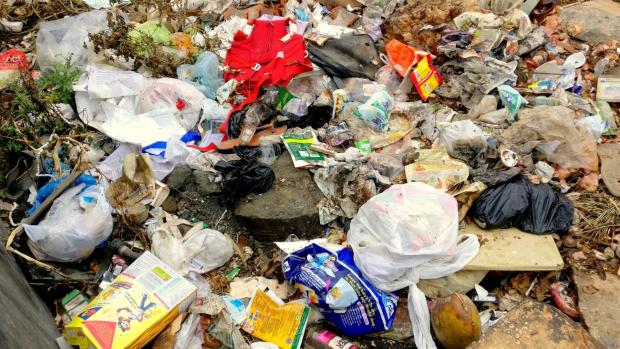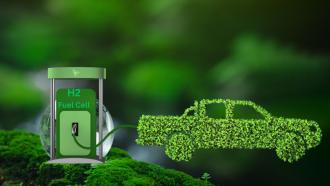
Photo: Siddharth Kankaria / Research Matters
If you took a stroll on the road today, chances are you may spot heaps of smelly garbage lying on the sides. Though there are campaigns like ‘Swachh Bharath’ that intend to clean up the country from this stench, how many times have we been disturbed by heaps of trash around the corner? Today, solid waste management is a major problem pestering corporations and residents of almost every city in India. Thanks to our ever-growing solid waste, existing landfills are now filled to the brim with garbage, and cities struggle to find more land.
Open dumping of waste is not only aesthetically unpleasant; it also contaminates the surrounding water bodies and act as breeding grounds for various disease causing microorganisms. Landfills have known to cause kidney and liver diseases, brain and nerve damage, malaria, cholera, and dysentery. The trapped gases are combustible, sometimes causing the landfills to catch fire in tropical countries like India. In other cases, the huge dumps cause a ‘landslide’ killing many in the surroundings, like the recent incident in Ethiopia.
While attempts to reduce waste generation are not yielding the desired results, it is probably time we realize that ‘dumping’ of our waste is not the solution either. Then what is? In a recent study, Prof. Sudhakar Yadla from Indira Gandhi Institute of Development Research, Mumbai, and Ms. N.T. Sindhu from Cochin University of Technology, Kochi, have made a detailed assessment of alternative ways of waste disposal that could be followed.
The ‘waste’ problem
Statistics say that each of us generate anywhere between 100g – 500g of waste per day. This includes the chocolate wrapper that you just threw in the bin, or the vegetable peels from cooking dinner. The daily solid waste generated in Mumbai city alone in 2011 was a whopping 7000 tons! And guess what? We are relentlessly generating more of it! In Mumbai, the waste generated in the last 3 decades grew by 67%-- from 3000 tons in 1981 to 5000 tons in 2011. As the population continues to grow, it is expected that by the year 2047, the waste generated would be at least 5 times the current numbers.
Most municipal bodies in the country usually collect the domestic solid waste from localities. Then why do we still have uncollected thrash littering the roads? That’s because the trash collection efficiency is just about 70% - 72%, implying that some areas or houses are left out in the collection process.
Once the waste is collected, it is deposited in the low-lying open land in the outskirts of the city boundaries. Research has shown that such open landfills are unscientific and often not properly maintained with the waste neither compacted nor covered. As the dump increases, the garbage is not well aerated, resulting in the accumulation of methane gas, which at times may cause explosions. The landfill gases contribute to global warming. Even as early as 1997, landfill gases were the third largest contributors to greenhouse gases in India.
Alternatives to waste disposal
It is common wisdom that sorting waste into recyclable, biodegradable and non-recyclable waste is the first step towards better waste handling. This process reduces the quantity of trash dumped in the landfills. Since most homes do not segregate waste, the onus of doing so rests on rag pickers who scout these landfills for recyclable waste that can be recovered from landfills. Plastic containers, glass bottles, metal caps and electronic waste – all these make up close to 25% of thrash in landfills in Mumbai, says a study. Rag pickers collect close to 12 kg of waste per day per person, thereby trying to make a living.
But what about organic wastes like vegetable peels and leftover food? The study suggests aerobic composting as a way of disposing them. Aerobic composting is a process of decomposing organic matter into a stable humus-like matter by the action of microorganisms, in the presence of oxygen. Just as the municipal corporation can use this process for large-scale waste disposal, the method is simple enough to be tried at a household level too, We can make a heap of the waste and turn it over periodically so that it stays aerated.
An alternative to disposing organic waste at home is vermi-composting using earthworms. “Earthworms eat soil and various kinds of organic matter. This then undergoes complex biochemical changes in the intestine, before being excreted out in the form of granular castes of earthy smell”, explains Prof. Yedla. However, one needs to take special care to avoid toxic waste mixing up. “Any toxic components in the waste can cause the entire worm population to die”, he cautions. There is an added advantage to all this hard work – the compost can be used in your garden to grow your own vegetables and flowers!
For the filth in the form of vegetable waste commonly found in markets, the study suggests anaerobic composting – composting without oxygen – where the vegetable waste is shredded, compacted, mixed with water and fed to a biogas reactor. The generated gas that is rich in methane and can then be used as an alternative fuel for cooking.
While the researchers agree that landfills cannot be done away with, they suggest a scientifically designed purpose build landfill system. In such a landfill, the waste is shredded, compacted and dumped inside a closed semi-engineered system for composting. There are various cells in this system and each cell can be used to dump waste for a year and can be closed for the next year to help composting. For the subsequent two years, methane recovered from the cell can be used as a fuel. In the fifth year, the manure can be mined, thus emptying the site. Such a system also enables the reuse of landfill sites say the researchers
The best way to dispose waste
With so many alternatives available, how does one select the ‘best’ way to handle our waste? The researchers of the study have found a way! They have calculated the quantity of greenhouse gases like methane, carbon dioxide and others that are released in each of these methods. In addition, they have also considered the cost of the land used for landfills. Using data from the Mumbai Municipal Corporation, they have assessed each method, assuming that it is used to dispose the entire collected waste.
The study found that the quantity of greenhouse gases released in aerobic composting and vermi-composting were almost equal to that of open dumping. However, anaerobic composting proved to be more environmentally friendly as its contribution to greenhouse gases was only 20% of that of open dumping. On the contrary, the purpose built landfill system, although more methodical and sanitary, released more greenhouse gases than open dumping.
Accounting for the land costs needed for each of these methods, it is obvious that open dumping needs several hectares of land. But the purpose built landfill system proposed by the researchers reduces the land requirement considerably, with the added advantage of generating biogas and manure, though greenhouse gas emissions are high. Aerobic composting, the study found, requires only about 9% of the land used for open dumps, while vermi-compsting stood at 17% of the open dumping land. For anaerobic composting, the land requirement is negligible since it is carried out in processing plants.
“Given these limitations of each method, no method can be used in isolation to achieve green house gases mitigation from the waste sector. Hence, it is essential to adapt an integrated approach by involving all these potential waste disposal methods to achieve a sustainable waste management system for Indian cities”, concludes Prof. Sudhakar.






